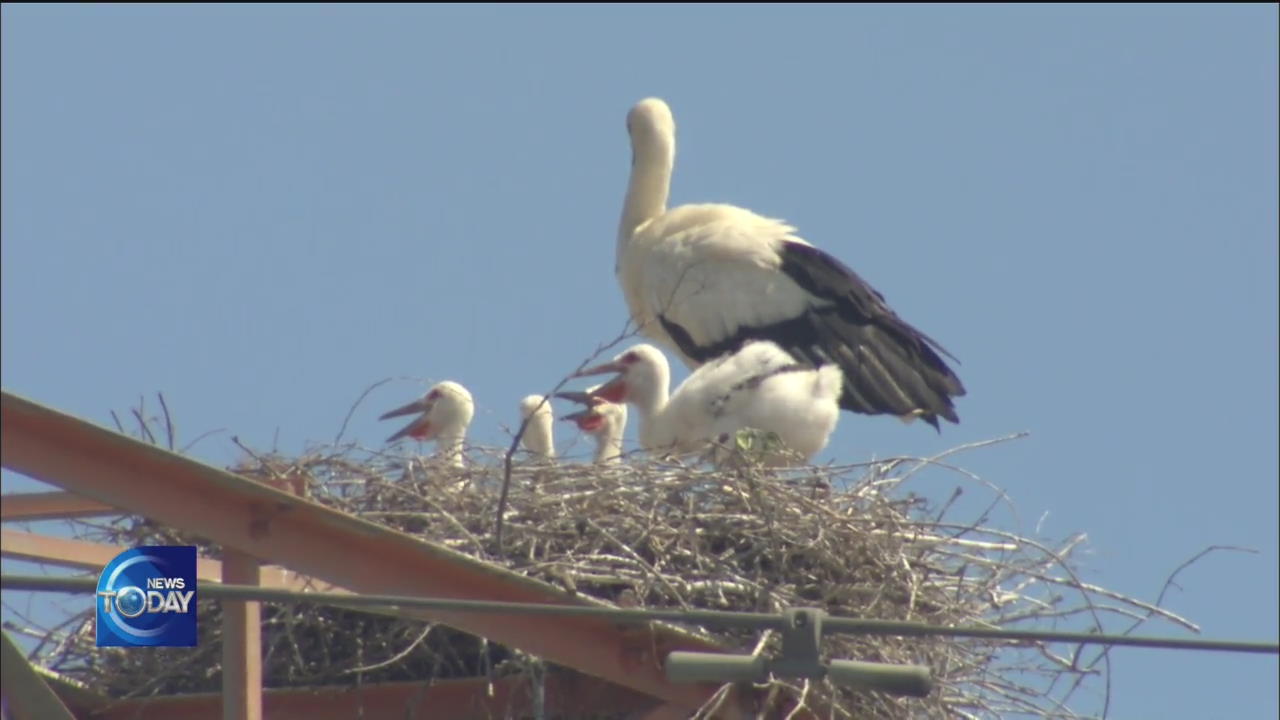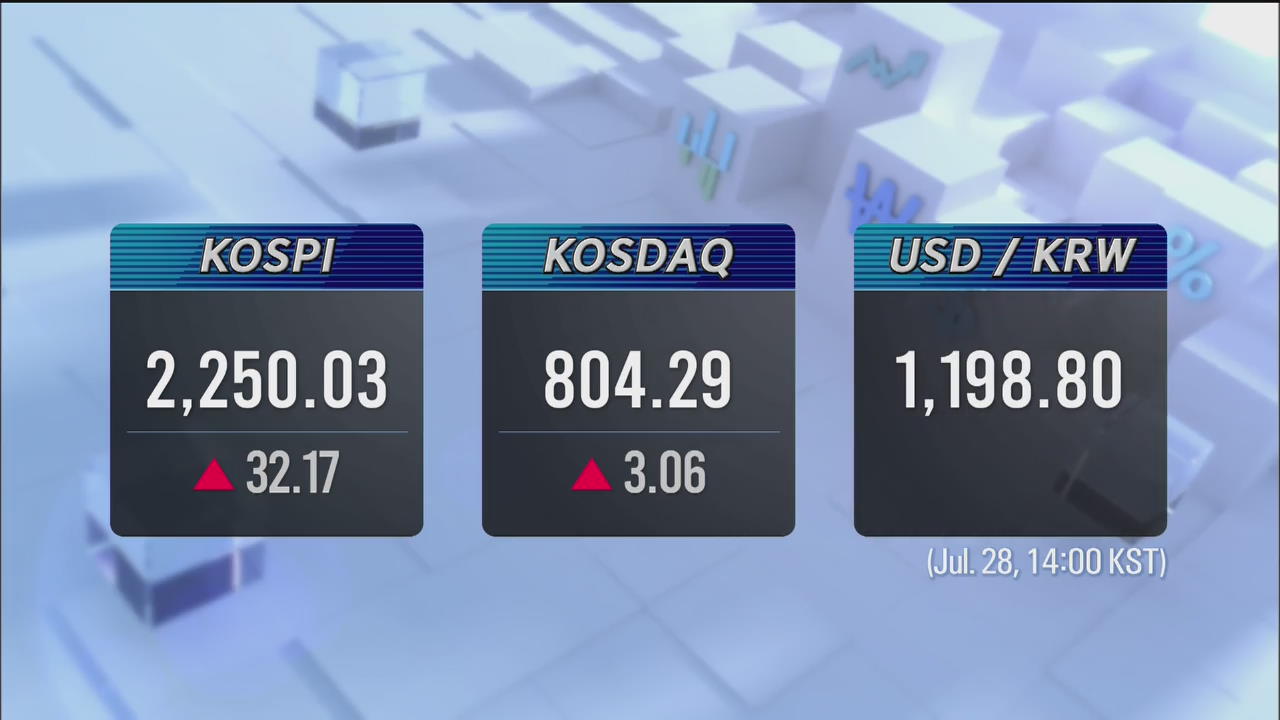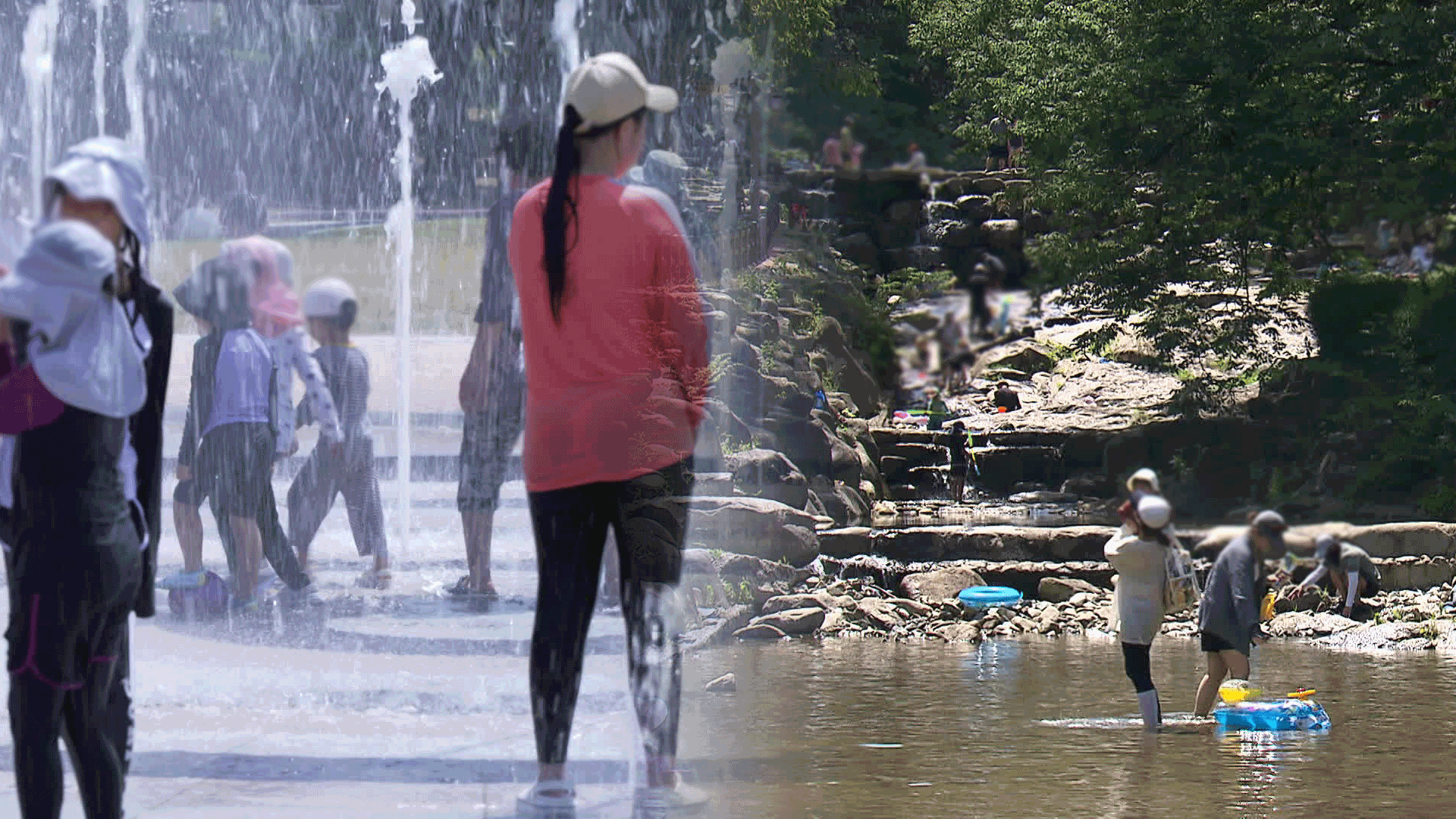PROJECT IN MAKING STORKS S. KOREA'S RESIDENT BIRD
입력 2020.07.28 (15:15)
수정 2020.07.28 (16:50)
읽어주기 기능은 크롬기반의
브라우저에서만 사용하실 수 있습니다.
[Anchor Lead]
Seven Storks that have been kept under protection as they are an endangered species and also a natural moment,returned to the wild. Experts assess that the project to make storks a resident bird in South Korea has produced successful results.
[Pkg]
Encaged storks fly into the sky vigorously once the door opens. They are a family of seven - the parents and their five babies born this year. Eight storks were first discharged in Yesan-gun County, Chungcheongnam-do Province in 2015. This is the 14th release since then.
[Soundbite] SHIN CHUN-KUK(YESAN RESIDENT) : "We fed them twice a day in the morning and evening. We gave three meals a day when they were young. They feel very close. It is sad to see them go."
Prior to this seven-member family, 51 storks were returned to the wild. Among them, five pairs gave birth to 19 chicks this year alone. As a result, a total of 49 chicks were born over the past five years. Recently, a couple was found to have moved out of Yesan and built their nest in a power-line tower in nearby Taean-gun County. They are spotted in other parts of the nation and even travel as far as to Russia and southern Japan.
[Soundbite] KIM SOO-KYUNG(SENIOR RESEARCHER, YESAN STORK PARK) : "We see them pass the winter safely and expand breeding areas in the summer. This shows storks are stably adapting to Korea's environment."
This means the released storks have adapted to nature well and have become a Korean resident species. It is because their habitat has improved with ample food available, as over 140 hectares of farmland in Yesan are now environmentally friendly. That's a stark contrast from just four hectares a decade ago. But the remaining task is to achieve genetic diversity of the birds, which are the descendants of storks brought in from Russia and Japan since 1996.
Seven Storks that have been kept under protection as they are an endangered species and also a natural moment,returned to the wild. Experts assess that the project to make storks a resident bird in South Korea has produced successful results.
[Pkg]
Encaged storks fly into the sky vigorously once the door opens. They are a family of seven - the parents and their five babies born this year. Eight storks were first discharged in Yesan-gun County, Chungcheongnam-do Province in 2015. This is the 14th release since then.
[Soundbite] SHIN CHUN-KUK(YESAN RESIDENT) : "We fed them twice a day in the morning and evening. We gave three meals a day when they were young. They feel very close. It is sad to see them go."
Prior to this seven-member family, 51 storks were returned to the wild. Among them, five pairs gave birth to 19 chicks this year alone. As a result, a total of 49 chicks were born over the past five years. Recently, a couple was found to have moved out of Yesan and built their nest in a power-line tower in nearby Taean-gun County. They are spotted in other parts of the nation and even travel as far as to Russia and southern Japan.
[Soundbite] KIM SOO-KYUNG(SENIOR RESEARCHER, YESAN STORK PARK) : "We see them pass the winter safely and expand breeding areas in the summer. This shows storks are stably adapting to Korea's environment."
This means the released storks have adapted to nature well and have become a Korean resident species. It is because their habitat has improved with ample food available, as over 140 hectares of farmland in Yesan are now environmentally friendly. That's a stark contrast from just four hectares a decade ago. But the remaining task is to achieve genetic diversity of the birds, which are the descendants of storks brought in from Russia and Japan since 1996.
■ 제보하기
▷ 카카오톡 : 'KBS제보' 검색, 채널 추가
▷ 전화 : 02-781-1234, 4444
▷ 이메일 : kbs1234@kbs.co.kr
▷ 유튜브, 네이버, 카카오에서도 KBS뉴스를 구독해주세요!
- PROJECT IN MAKING STORKS S. KOREA'S RESIDENT BIRD
-
- 입력 2020-07-28 15:19:16
- 수정2020-07-28 16:50:51

[Anchor Lead]
Seven Storks that have been kept under protection as they are an endangered species and also a natural moment,returned to the wild. Experts assess that the project to make storks a resident bird in South Korea has produced successful results.
[Pkg]
Encaged storks fly into the sky vigorously once the door opens. They are a family of seven - the parents and their five babies born this year. Eight storks were first discharged in Yesan-gun County, Chungcheongnam-do Province in 2015. This is the 14th release since then.
[Soundbite] SHIN CHUN-KUK(YESAN RESIDENT) : "We fed them twice a day in the morning and evening. We gave three meals a day when they were young. They feel very close. It is sad to see them go."
Prior to this seven-member family, 51 storks were returned to the wild. Among them, five pairs gave birth to 19 chicks this year alone. As a result, a total of 49 chicks were born over the past five years. Recently, a couple was found to have moved out of Yesan and built their nest in a power-line tower in nearby Taean-gun County. They are spotted in other parts of the nation and even travel as far as to Russia and southern Japan.
[Soundbite] KIM SOO-KYUNG(SENIOR RESEARCHER, YESAN STORK PARK) : "We see them pass the winter safely and expand breeding areas in the summer. This shows storks are stably adapting to Korea's environment."
This means the released storks have adapted to nature well and have become a Korean resident species. It is because their habitat has improved with ample food available, as over 140 hectares of farmland in Yesan are now environmentally friendly. That's a stark contrast from just four hectares a decade ago. But the remaining task is to achieve genetic diversity of the birds, which are the descendants of storks brought in from Russia and Japan since 1996.
Seven Storks that have been kept under protection as they are an endangered species and also a natural moment,returned to the wild. Experts assess that the project to make storks a resident bird in South Korea has produced successful results.
[Pkg]
Encaged storks fly into the sky vigorously once the door opens. They are a family of seven - the parents and their five babies born this year. Eight storks were first discharged in Yesan-gun County, Chungcheongnam-do Province in 2015. This is the 14th release since then.
[Soundbite] SHIN CHUN-KUK(YESAN RESIDENT) : "We fed them twice a day in the morning and evening. We gave three meals a day when they were young. They feel very close. It is sad to see them go."
Prior to this seven-member family, 51 storks were returned to the wild. Among them, five pairs gave birth to 19 chicks this year alone. As a result, a total of 49 chicks were born over the past five years. Recently, a couple was found to have moved out of Yesan and built their nest in a power-line tower in nearby Taean-gun County. They are spotted in other parts of the nation and even travel as far as to Russia and southern Japan.
[Soundbite] KIM SOO-KYUNG(SENIOR RESEARCHER, YESAN STORK PARK) : "We see them pass the winter safely and expand breeding areas in the summer. This shows storks are stably adapting to Korea's environment."
This means the released storks have adapted to nature well and have become a Korean resident species. It is because their habitat has improved with ample food available, as over 140 hectares of farmland in Yesan are now environmentally friendly. That's a stark contrast from just four hectares a decade ago. But the remaining task is to achieve genetic diversity of the birds, which are the descendants of storks brought in from Russia and Japan since 1996.
이 기사가 좋으셨다면
-
좋아요
0
-
응원해요
0
-
후속 원해요
0

















이 기사에 대한 의견을 남겨주세요.